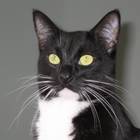Saturday, November 06, 2004
Dance made audible

Last night I had a peak musical experience, the sort that makes me feel deeply connected to the people around me. I was making music with friends, playing for dancing.
According to choreographer George Balanchine, “Dance is music made visible.” In formally choreographed dance performance pieces, the choreographer chooses music, and creates a dance that expresses his or her sense of the music. A talented choreographer can help you to “see” things about the music that you might never have heard on your own. A dancer’s syncopated steps help you to notice a subtle rhythm underlying a melodic line. A rush of dancers leaping across the stage highlights a powerful surge in the score. However, a highly choreographed dance piece is one interpretation of a piece of music that is also often highly arranged, whether a symphonic piece in which the composer’s intent is indicated, or in much modern dance, a particular recording of the music.
The dancing for which I play is traditional English folk dancing. There are several variants of this, which can be generally divided into social dance (English country dancing) and display dance (Morris and sword dancing). These are old dance forms; Shakespeare wrote about Morris dancing, and some of the English country dances that are danced today were published in the 1600s and 1700s.
(English country dancing is not terribly complicated. If you can walk, and perhaps skip a little, can tell the difference between left and right, and are willing to take hands with other people to move in simple patterns, you have all the skills you need. Have you have seen a recent movie adaptation of a Jane Austen book? Emma, Sense and Sensibility, and Pride and Prejudice all have featured English country dancing.)
Needless to say, when these dances originated, they were danced to live music. There was no alternative. And, while each “dance” – a particular set of figures arranged in a particular order - had its own particular tune, the written music that was provided was generally only a melody line. Musicians of the period were expected to understand how to add chords, a bass line, a harmony part.
Likewise, modern English country dance musicians generally have only a basic tune, or melody line, as a starting point. While the tempo that the music is to be played is dictated to some degree by the figures and character of the dance, everything else is left to the discretion/whim/madness of the musicians. Most musicians I know are also dancers, and understand how it feels to move to this music. With musicians who understand the dance, are comfortable improvising, and listen well to each other, the results can be music that is quite varied and interesting. This can create two different feedback loops: one among the musicians, the other between the musicians and the dancers. In the first, one musician starts the tune in a particular style – bluesy, romantic, delicate, driving – and the other musicians pick up on that, adding to and reinforcing the musical idea, before suggesting another. As the musicians vary the way they play the tune, they are suggesting to the dancers a different interpretation of the dance. Dancers who are sensitive to the music will respond by changing the way that they move; they will slink to the blues, step lightly to a delicate sound, swirl to lush romantic playing… and watching the dancers move will provide the musicians with new ideas for varying the tune. In this way, not only is the dance music made visible; the music is dance made audible. And that, for a dance musician, is sheer bliss.
Last night, I played for the local English Country Dance. There were three of us playing together for the evening: my friends Julie on piano and Betsy on flute, and me on violin. While I have played for dancing with both of these very talented women quite a few times since moving to Seattle, we are not a “band” – we don’t play together as a group regularly, we don’t rehearse for our gigs. In fact, I don’t think that I have played with Julie and Betsy together before last night. But it was one of those nights when everything clicked. The first fifteen minutes or so, we were getting warmed up, settling in, syncing up. And then, there was a moment when we the magic happened. We began to pick up on each other’s musical ideas and moods almost instantly. We were communicating via our instruments; supporting and reinforcing each other’s experimentation. And the dancers felt it, too; the usual dance-floor small talk and shuffling of feet stopped, and there was just the music and quiet, rhythmic footsteps on the floor.
When that dance ended, I turned to look at Betsy and Julie. We stared at each other. We were all grinning. I had goosebumps. Then Betsy, who was seated in the middle, reached out her hands to Julie and me, and we grabbed them. Making that physical connection released some sort of energy; we all shivered. Oh, and the dancers were clapping and whistling and stomping in a way that would not have fit at all in a Jane Austen movie, but felt really good in that little meeting house hall.
I would not have guessed that musical magic would’ve happened last night. Before the dance, Betsy, Julie and I had chatted about how each of us was tired. We were saddened / disturbed / angered by the events of the week. We had a lot on our minds. And despite all that, something mysterious and wonderful happened when we played music together. We, and the people around us, were refreshed, enlivened, thrilled by something that was larger than us. Exactly what that is, I have no words for.


 Music and Cats
Music and Cats